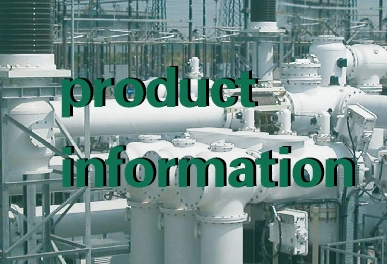Sulfur Hexafluoride (SF6) gas, as a key insulating and arc extinguishing medium in power systems, plays a crucial role in ensuring the stability and insulation performance of equipment for normal operation. In order to ensure the reliability of SF6 gas, it is particularly important to inspect and use the SF6 gas density monitor. This article will delve into the properties of SF6 gas and how to effectively control its inspection and use through the SF6 gas density monitor.
Necessity of SF6 Gas Density Monitor
Sulfur hexafluoride is a colorless, odorless, non-toxic, non-flammable gas with strong negative electron affinity, making it an ideal insulating medium. In power systems, the main function of SF6 gas is to rapidly extinguish the arc during arcing, protecting the equipment from damage. However, due to factors such as partial discharge and high temperatures, SF6 gas may decompose, producing a series of toxic byproducts. This not only poses a potential threat to the equipment but may also harm the health of operators.
With the increasing attention to SF6 leakage alarm systems, the role of the SF6 gas density monitor has become increasingly important. However, many people are still confused about why to install the SF6 gas density monitor. In power systems, the SF6 gas density monitor can monitor the density changes of SF6 gas in real time, provide timely warnings, and help maintenance personnel take necessary measures to prevent equipment damage and personal injury.
Inspection and Use Methods of SF6 Gas Density Monitor
Regular Inspection of SF6 Gas Pressure
In the normal operation of GIS equipment, regular inspection and checking of the SF6 gas pressure in each chamber is crucial. Any abnormal decrease in pressure needs to be identified promptly and appropriate corrective measures taken. When the SF6 gas pressure drops to the alarm value, recharging should be done according to the specified SF6 gas pressure value to ensure the gas reaches the rated purity.
Quantitative Leak Detection Using SF6 Gas Density Monitor
To improve the accuracy of detection, it is necessary to use a quantitative leak detector like the SF6 gas density monitor to check all assembled sealing surfaces, pipe connections, and other doubtful points. This method is simple and can detect more obvious local leaks.
Leak Detection by Segregating GIS Combined Apparatus
By splitting the GIS combined apparatus into several parts by chamber for leak detection, the blindness of detection can be reduced and the accuracy of leak detection can be improved.
Innovative Leak Detection Methods
Using the localized bandaging method, measuring points are wrapped in plastic sheeting, and after a period of time, the SF6 gas density monitor is used to measure whether there is leaked SF6 gas within the plastic sheeting. This is a relatively common leak detection method that can effectively identify some more concealed leakage points.
Upwind Leak Detection and Other Auxiliary Methods
During the detection process, using the upwind leak detection method in combination with an environmental online monitoring alarm system can more quickly and accurately pinpoint leak points. For situations where the gas leakage is too large and the leak points are difficult to find, soap water or detergent can be used for detection, or even high-viscosity sealants can be applied along welds to improve the accuracy and effectiveness of detection.
In power systems, the inspection and use of the SF6 gas density monitor are essential for the reliability and safety of equipment. By regularly inspecting equipment pressure, using the SF6 gas density monitor for quantitative leak detection, and adopting innovative leak detection methods, the normal operation of equipment can be effectively ensured, maintenance costs reduced, and the reliability of the power system increased. Therefore, we strongly recommend the power industry to attach great importance to the use of the SF6 gas density monitor in equipment operation to ensure the safe and reliable operation of the power system.
Related Article for Reference
What Are the Types of Pressure Gauges?
Here are the different types of pressure gauges:1. Liquid column pressure gaugeThe liquid column pressure gauge is based on the principle of statics, which converts the measured pressure into the heig...
Tue 12 2020
High Voltage Substation SF6 Gas Monitoring System
In the new unmanned substation, SF6 gas monitoring system has become an indispensable element to ensure the safe operation of equipment. Especially for SF6 combined electrical equipment in high-voltag...
Sun 04 2024







